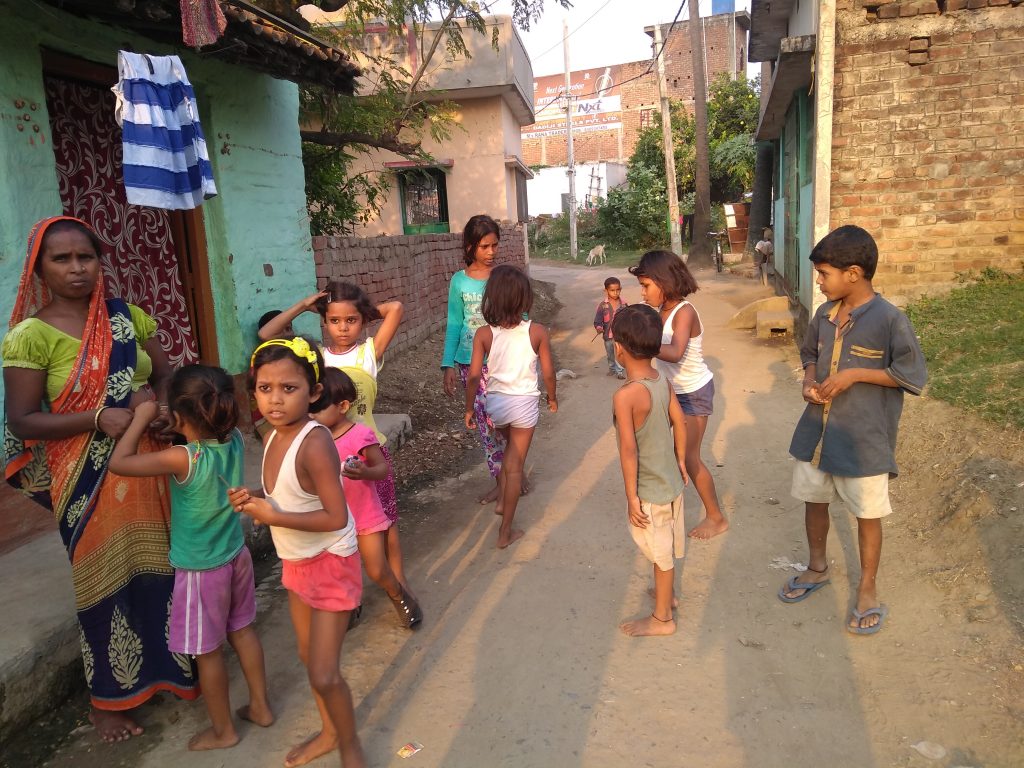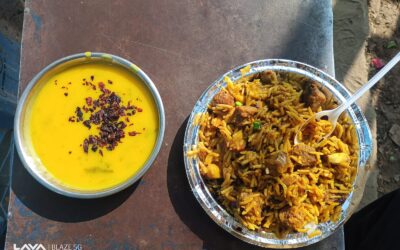The ongoing wave of feminism seems to have taken India by storm, but has it managed to hit all the right spots yet? Indian feminism has lately drawn strong critique for being exclusionary in nature and I found my own thoughts deeply resonating with this narrative in the narrow alleys of Munger, Bihar.
Having grown up at the confluence of the third and fourth waves of global feminism, I’ve belonged to a generation of women who are fighting for emancipation from a patriarchy internalized over generations, its understanding drawn heavily from personal experiences and the larger social debate driven majorly on social media platforms. Though I continue to support the movement that has given a voice to those with access to technology, the grim reality as said here that “it has tended to represent the interests and concerns of upper-caste women rather than reflect the experiences of Indian women en masse” needs to be acknowledged and understood.
But how did we get here?
Some of the earliest examples of noted changes in India’s social customs involving women, are from a time when colonialism meddled with the country’s diverse culture. The abolition of sati in 1829, for instance, was a result of it being recognized as a barbarity by colonial rulers. With increasing education on these regressive customs that reflected their inhumanity and violence to the urban elite, social reforms emerged. A series of campaigns and programs for female emancipation were launched.
“Elite urban men led these movements and challenged many of the ritual and social restrictions to which upper-caste women were subjected. As fathers and husbands, the men were able to extend many benefits of modernity to a small but significant group of women. These women were drawn into the public spheres of formal education and eventually into employment, political participation, and leadership.”
– Policy research report on Gender and Development, April 2000, The World Bank
Though these benefits didn’t cut across class and caste, they were achieved with significant struggle and should not be dismissed. However, arguments still revolve around whether these efforts were really made for women’s rights and achieving gender equality or only to reform traditions to fit with the idea of modern civilization. Colonial ideologies, however, found it difficult to penetrate into the domestic sphere of Indian households where women’s role was further moulded as domestic beings responsible for the comfort and well-being of families, as creatures central to a ‘home’.
Prof. Samita Sen mentions in her book, Women and Labour in Late Colonial India: The Bengal Jute Industry – “The good woman, the chaste wife and mother empowered by spiritual strength, became the iconic representation of the nation.”
Even today, there are agendas running in the name of preserving ‘Indian-ness’, teaching young girls to become good housewives, guardians of tradition and culture, responsible for keeping values and families intact. Rashtriya Sevika Samiti, the women’s wing of RSS, is one such organization. This deep cast of gender manifests itself across the nation – urban and rural spaces alike. However, the unsettling gap outside such organizations rests in the fact that urban upper-class privilege has allowed women to move beyond traditional roles and embrace individuality through a certain unity of the educated and aspirational. They are active participants in debates, finding platforms where their voices are heard and significantly impact political sensibilities.
Right here is where the representation of the ‘Indian woman’ gets skewed.
The feminist movement in India today is stratified into smaller feminist groups for reasons of due representation that has been denied to them since pre-colonial times because they belonged to a certain caste, region or religion that was left behind in the nation’s race for half-baked modernity. Women’s fight today isn’t just against patriarchy, it is also against each other because of the upper-class’s limited understanding of struggles that come with being backward-class and low-caste. I am not disregarding each woman’s essential and individual struggle against a deep-rooted patriarchy, but trying to highlight that we need to continually deconstruct the multiple layers of this disjointed feminism. Only then can we negotiate for holistic reforms that encompass experiences of ALL women.

When I began experiencing life in rural Bihar, it was unnerving to see how oblivious this part of the world is to the raging social debate. Women working in empowerment organizations say “aurat ghar pe khana nahi banaegi toh kaun banaega?” (If the woman doesn’t cook in her house, then who will?). The mold of domesticity is their regularity. Women who come to the credit cooperative’s office talk about why they defaulted in maintaining savings, saying “maalik paise denge tab hi toh chala paenge. Hum kahan se laaye?” (If my owner, (read husband) doesn’t give me money, then how can I run my account?) The mold of a subordinate is unquestioningly accepted. Even amidst well educated circles, where the woman is also a working mother, you’ll hear men say, “hum paisa bhi kamaein aur ghar ka kaam bhi karein?” (I earn and also perform household chores?) Women’s contribution to the household economy is not just side-lined, it is unacknowledged.
I met Poonam Devi during a field visit and we spoke about her 7 daughters and 1 son. She was not the first woman to mention, “Kam se kam ek ladka toh hona chahiye!” (You should have at least one boy!) She spoke about how multiple children have affected her family’s financial situation, that her husband doesn’t earn much as a laborer at the gun factory and that one of her unmarried daughters is the major contributor to household income. She will, however, get married and leave. The son will stay. The fact that he steals money from home instead of contributing to an already strained household comes later. She said that her daughters are all educated enough to work if needed, but they’re married in well-to-do families. The eldest one just had her 4th daughter at 22 and will continue to bear children until a boy arrives.
Her sense of being a second-class citizen, inferior to men, is passed on through generations.

These are widespread realities that have been trivialized and reduced to mere statistics in the Indian feminist movement because they don’t look or seem like our own. They continue to silently exist under the hegemony of educated urban debates. They don’t even fight for representation in women’s emancipation, as they’ve no place in it.
I too, have failed to understand my position of privilege on multiple occasions. At some point, we all may have. In the latest wave of feminism opposing sexual harassment, a lot of people, mostly women, have come out with their harrowing experiences on social media. My own story of sexual abuse found a voice in this sea of rage. It took me over 20 years to come to terms with the trauma that had been buried in my mind while I continued to let internalized misogyny make me feel guilty for being abused. It was liberating to be able to finally accept what had happened and speak about it.
I wasn’t alone; it wasn’t my fault; my story was important and no one could make me feel otherwise – This sense of liberation, however, slowly dies beyond individual experience.
On my way to Bhagalpur in the daily local, a relatively young, newly married woman took a seat between two families that occupied the compartment. She sat right across me while her husband stayed back in the aisle amidst more crowd. As I made a mental notes of things I wanted to share in the meeting I was travelling for, I observed a sudden change in the body language of the man sitting next to her. He shifted from his relaxed position to an upright posture, his eyes taking swift glances at people around him including his wife and a 2-year old son sitting next to me. I saw the woman stiffen a little but with everyone pushed so close to each other, I couldn’t see what was happening.
The next moment, her eyes began to well-up and I could see her swallow with great difficulty, yet she continued to sit motionless. About a minute later, she moved her arm to her side, unknowingly revealing to me the disgusting sight of the man’s fingers stroking the side of her breasts. I froze!
She tried to manoeuvre her arm silently, trying to distance his fingers from touching her, but didn’t say a word. My gut tightened and after rushing through a dozen thoughts about what to do, I got up and offered the woman to exchange seats with me. As expected, the man retreated to his laid back position the moment I sat next to him, his hands lingering nowhere near my personal space.
Two stations later, after the man de-boarded with his family, I asked the woman if she was alright. She pretended she didn’t understand what I was saying.
Witnessing her trauma up-close makes me think, even today, about the incident. Why didn’t I call the man out in front of everyone? Did it matter that his wife and a young child sat right next to me? What repercussions would it have had on the woman who was abused – would she speak up, if asked? Would anyone believe her? Would her husband stand by her or reprimand her in public? Would it end up in her being ashamed of getting stuck in such a situation? How many such instances has she silently endured? Where is her #metoo?
What is this liberation I speak of, when I can still only offer silence, when I still grapple with absence of context and support in places where it is so direly needed? It’s a fight against my own privilege!

There is an urgent need for Indian feminism to acknowledge that class, caste, social status and religion are issues that veil and often strangle a woman’s agency; that while we might see more women join the movement, there is a considerable gap that leaves out narratives of those at local and regional levels; that we cannot march ahead with these fissures unaddressed. It’s only for good that urban debates are trying to transform public spaces for women, but the finer nuances that they seek to address are secondary to most women in the country. They still live in folds of patriarchy that a part of the urban generation may never witness. To achieve real socio-political reforms, these struggles need a voice for a coherent representation of what it means to be a woman in the Indian society. A representation to churn the stagnant waters of patriarchy resting in corners not visible to the naked eye.




Lovely to read your article. We have a long way to go, more to question the “privileged ourselves”.